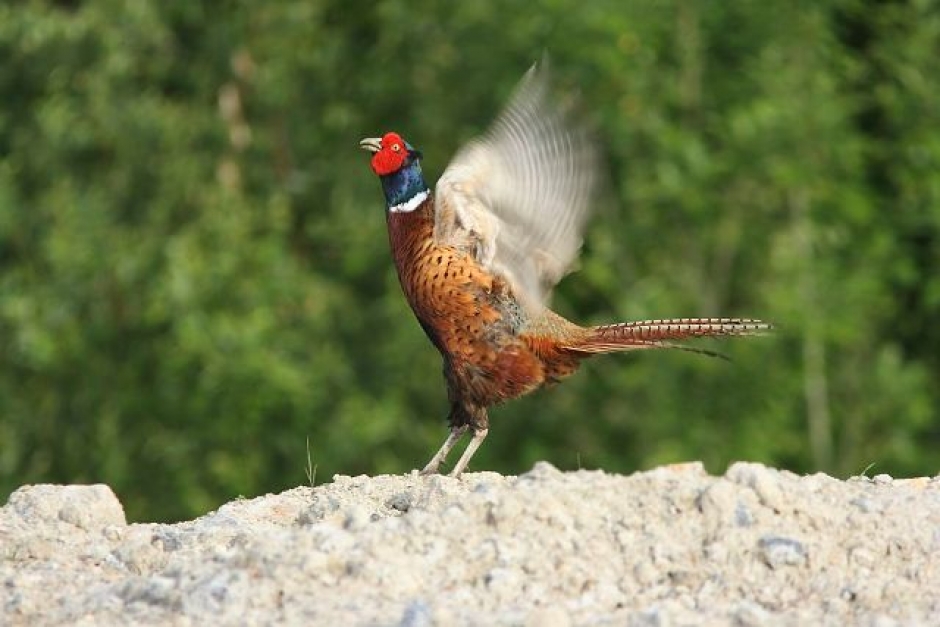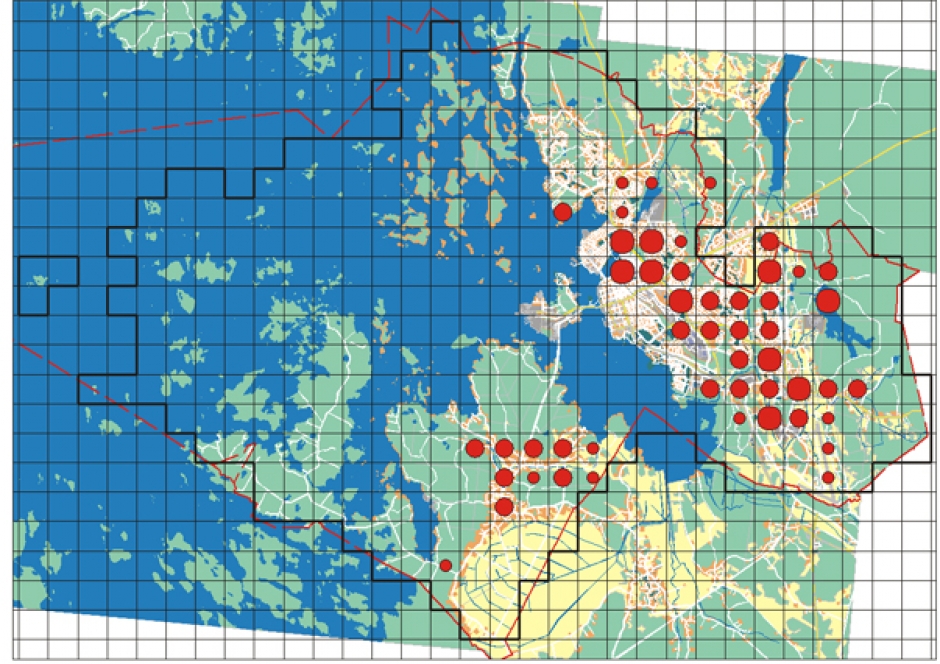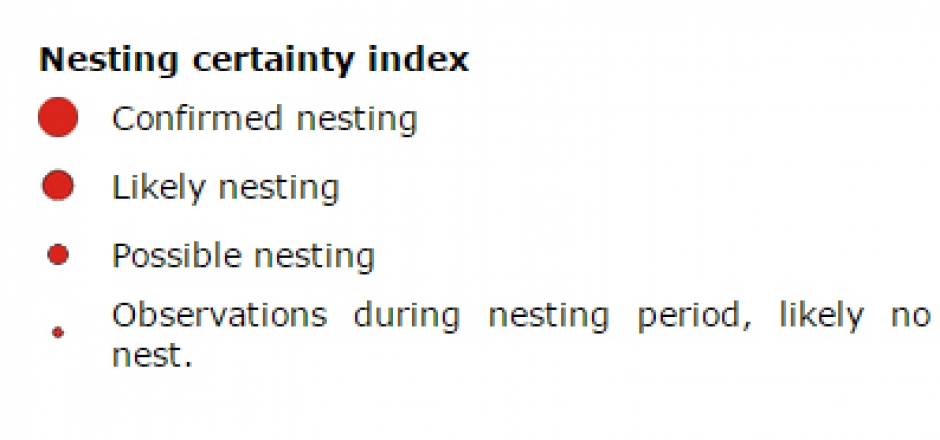Common Pheasant
Phasianus colchicus

General information. The pheasant is originally an Asian native, introduced in Finland at the beginning of the 20th century. The population has remained vital ever since the beginning of the 1950’s due to new releases of stock and wintertime feeding. The number of nesting pairs has been estimated to range up to 10,000 pairs, of which males and their several females can be held responsible. In southern Ostrobothnia, the density of the pheasant population is 0,1 pairs/ km². During cold winters with excessive amounts of snow, the pheasant cannot survive without winter feeding. The males fighting over territory can occasionally be very loud, especially during spring mornings.
- Length of male 85 cm, female 60 cm
- Nests on the ground, under vegetation cover
- Sedentary species
- Feeds on seeds, worms and insects
Habitat. The common pheasant thrives in half open scrublands near detached housing areas and countryside villages. Marginal lands and bordering areas are favorite habitats in the city for the common pheasant. It is absent from densely built up areas.
Distribution in Vaasa. The common pheasant is a relatively sparsely nesting species. It has been observed in approximately 50 survey blocks. Spring mornings in the Sundom village or Vanha Vaasa, for example, are invariably connected by pheasant calls.


